Why We’re Temporarily Shutting Down Bitcoin Vending Machines on July 31st
WARNING: The following article is for bitcoin newbies, explaining to them what may happen coming up on August 1st and what they can do about it. If you're experienced in bitcoin and are already knowledgeable about the internal conflict, you may not really learn anything new below:
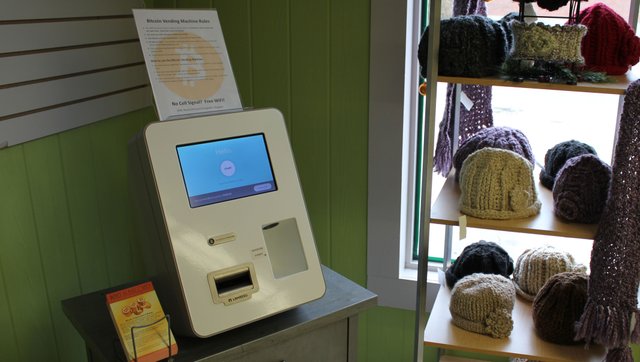
In a recent, in-depth article, I discussed the out-of-control fees to send bitcoin. The executive summary is that Bitcoin is somewhat broken due to the high fees that have been caused due to the Bitcoin network not being able to scale to consumer demand. The reason for this is because there has been an ongoing "geek war" for a couple years now behind the scenes that centers over some fundamental disagreements over how Bitcoin should handle its growing pains with scaling up. Meanwhile, the fees have been rising over the last six months and have killed off the previous usefulness that Bitcoin had for microtransactions, or even small dollar transactions. Again, see my original piece for more about the fee difficulties.
Now the ugly Bitcoin not-so-civil war that has been playing out behind the scenes on message boards, reddit, and social media for months and months is going to come into public view on August 1st. Here's my non-technical explanation for what's happening and how, if you're a bitcoin holder or bitcoin-accepting merchant, it could affect you:
To oversimplify a complex situation, there are basically two "sides" in this ridiculous conflict. (For those who want the more complex, technical explanation, there are no shortage of excellent articles you can find by searching for SegWit2x, UASF, and UAHF. Here's one.)
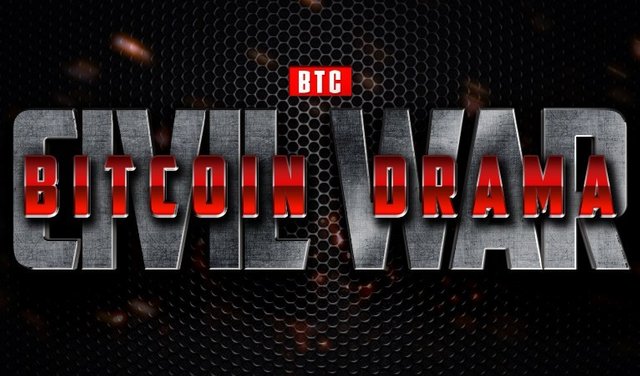
One side is those who say that a new technology for Bitcoin called "Segregated Witness" or "SegWit" for short, is necessary to fit more transactions into Bitcoin's "blocks". Blocks are the guts of the "blockchain", the distributed, decentralized, public ledger that is the essence of what makes Bitcoin special. The problem causing the fees to be bid up is that these blocks are full of transactions, leaving the lower-fee transactions stuck waiting for hours or even days to confirm. As a result, people are paying 10-100x more than they used to just to get their transactions through in a decent amount of time.
The other camp are those who support increasing the block size. It's currently one megabyte and they'd like it raised to two and beyond. The "big blockers" argue that limit was originally put in place to fight spam transactions. They say Bitcoin's anonymous creator Satoshi Nakamoto's vision was clearly against limiting the block size.
I'm not a computer programmer, so I have no real opinion about which technical change is the best one, and ultimately it doesn't matter what I think, the people with the most sway in the Bitcoin universe are the miners. What they decide to do, is likely the way things will go. Likely. Let me explain from a more philosophical perspective, before getting back to what could happen on August 1st.

One of Bitcoin's greatest strengths is that it was not created or issued by big banks or government. It was the world's first decentralized digital currency. It's cryptographically secure and can't be hacked or taken offline because of its distributed, decentralized, global network. It's truly an amazing creation and has changed the future of money as fundamentally as the way the internet has changed communication.
There's also a major difference between how centrally-issued currencies like the US Dollar are administrated. The US Dollar, controlled by the Federal Reserve for the benefit of the evil, aggressive US Federal Government, is administered at the whim of politicians, whichever ones happen to be in power at the moment. They can inflate the money supply at will, destroying the value of any dollars you might be holding. This is a fundraising method for them, a hidden tax. Bitcoin on the other hand is decentralized, which means that it's not subject to the will of one man or a group of unaccountable men. That's good because it means Bitcoin's value can't be debased to benefit anyone "in charge", because there's no one in charge.
However, its decentralized nature means that while Bitcoin can be upgraded over time, it can be a messy process. There are various types of stakeholders in the Bitcoin ecosystem: Miners, Programmers, Full Nodes, and Users (which include merchants, individuals, exchanges, merchant services providers, etc).
Now that you know the various types of stakeholders and the possible options to scale the network, you may be wondering, "How do these people come together to improve Bitcoin technically and allow it to scale up to consumer demand?" The answer is, they might not come together, and those who are refusing to come to the table to talk and compromise are planning to possibly break away on August 1st.
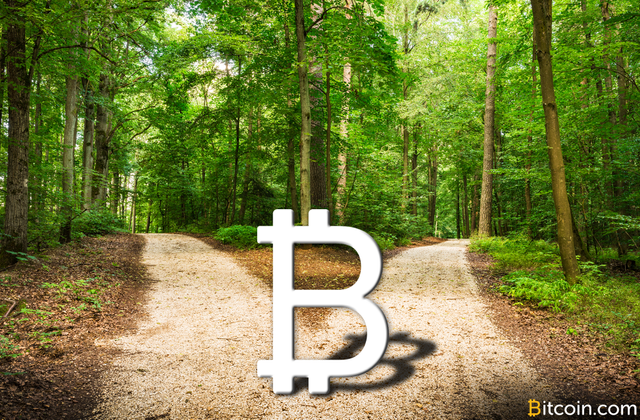
What could happen? Lots of different things. Here's what I hope will be the most likely scenario:
Segwit2x:
In late May at the "Consensus" event in New York an agreement was finally reached by major Bitcoin-related businesses and holders of approximately 83% of the mining power in the world. This agreement gives the SegWit advocates what they want, SegWit, then within six months increases the block size from 1 MB to 2 MB. The "SegWit2x" or the "New York Agreement" plan includes a timeline that they have been following, thus far. They've released their beta software to the miners and as of right now, more than 86% of the world's mining power is signaling their support for SegWit2x. In order to change Bitcoin, you need ideally a supermajority of miners to support the proposal. SegWit2x appears to have this support. If a proposal doesn't have the miners' support, that idea is basically dead in the water.
In less than a week from now, on July 21st, SegWit2x-supporting miners are expected to be running the new SegWit2x software and signal their activation of SegWit. If they do as agreed, SegWit will activate, likely before August 1st. With 86% of the mining power currently behind this proposal and everything going as planned so far, this seems the most likely scenario.
However, even if SegWit2x goes into action before August 1st, there's still at least one wildcard in play called "UASF".
UASF:
The "User Activated Soft Fork" or UASF is the reason why August 1st is the big day in question. There is a group of people who run Bitcoin "Full Nodes" that are SegWit fanatics who are planning to split the Bitcoin network with a "soft fork" on August 1st. I realize that's a lot of jargon, so allow me to clarify:
"Full Nodes" are those computers in the world that are running special Bitcoin software that includes a copy of the entire Bitcoin blockchain - currently over 140 GB of data. While the miners are arguably the most important decision makers in the Bitcoin universe, the Full Nodes also perform an important role of block and transaction validation. In this case, right now about 15% of the approximately 7,900 Full Nodes are signaling their support for the UASF.
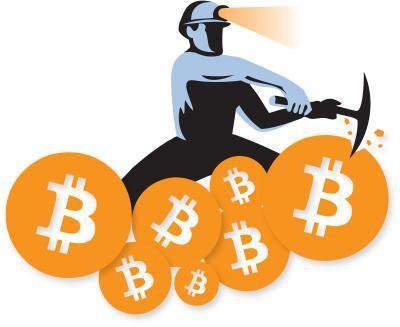
The UASF people, as I understand it, do not support the SegWit2x plan, despite their support for SegWit. Presumably, they do not wish to see the block size raised, and that's why they oppose SegWit2x. Despite not appearing to have any significant mining power or even the rest of the full nodes behind them, this vocal minority is plotting a schism in the Bitcoin network on August 1st. They plan to accomplish this by ordering their nodes to refuse to validate any blocks that do not include a signal that indicates the miner who mined the block supports the UASF proposal. If the UASF full nodes are backed by some small amount of miners, they will "soft fork" the Bitcoin blockchain.
A "soft fork" would mean the point in time at which the blockchain, (Bitcoin's public ledger that goes back to the beginning of the currency in 2009 and contains every transaction that has occurred), will fork into two. Each would have all the transactions from 2009 through August 1st at the time of the fork, but after that time would have different transactions logged to each chain. That means there would be two Bitcoin networks, each competing to be the "real" Bitcoin.
It also means that anyone holding bitcoin (in a non-custodial wallet where you control the keys) before the fork would then have the same amount of BOTH types of bitcoin. For the sake of this discussion, let's call them "Original Bitcoin" and "UASF Bitcoin". If you had 10 bitcoins before the split, afterwards you'd have 10 original bitcoin and 10 UASF bitcoin.
This is where things can get dangerous and even more confusing, if it wasn't flummoxing enough already!
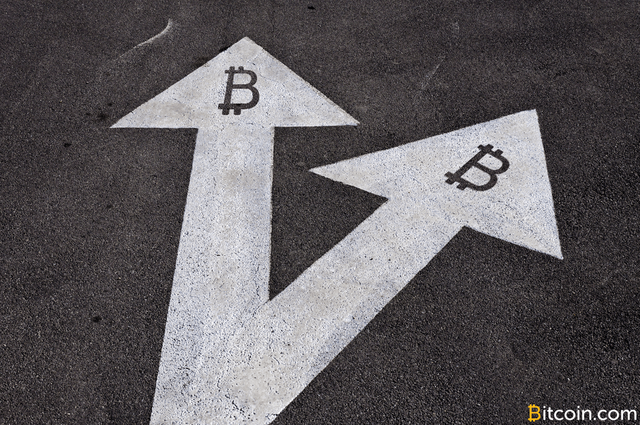
In Jimmy Song's blog post where he covers multiple potential scenarios, he does an excellent job of explaining a likely outcome of the UASF scenario if they don't have much mining support (and they don't appear to):
In this scenario, the Users have something like 0–13% of the July 31 network hash rate on August 1. The obvious consequence of having such a low hash rate is that blocks will come very slowly (one per 80 minutes+). This leads to two big problems.The first problem is that there will be a tremendous backlog of transactions on the Users’ fork. Transactions will take a very long time to confirm, and since block space is scarce, fees will be very high. The cost and time of transacting Users’ fork coins may put downward pressure on price.
While there's a chance the UASF Bitcoin could be snuffed out due to lack of miner support there's also a chance it could continue on competing in the marketplace to be considered the "real" Bitcoin. This will be quite difficult if they have low miner support for the above reasons. For more detail on "forking", check out this article.
For an unknown amount of time after a fork, it's risky to send or receive bitcoin. This has to do with the fact until the dust settles after the fork, you can be subject to "replay attacks" until the exchanges and wallet providers come up with a way to protect against these attacks. There's also the risk that one of the two sides of the fork will be eliminated through competition, which would destroy any transactions that happened on that chain. Further, some companies may side with one chain or another rather than allowing both, which will lead to extreme confusion as to which Bitcoin is which.
Is this starting to sound like a nightmare? I've only scratched the surface on what could happen, but as a non-programmer who has done a fair amount of reading on both "sides" of this subject, it seems to me that these are the two most likely scenarios:
- SegWit2x activates before August 1st and UASF supporters abandon their plan out of expected failure.
- SegWit2x activates before August 1st and UASF supporters and a small percentage of the mining power fork Bitcoin. It could then be days or weeks before the dust settles and we can safely send and receive bitcoin again.
Please note, I'm oversimplifying and haven't even touched on the "User Activated Hard Fork" (UAHF) that is planned as a response to the UASF being more successful than expected.
Given that the situation is going to be very fluid and potentially risky, we at Shire BTC Vending and Shire Bitcoin are shutting down the Bitcoin Vending Machines in Manchester, Concord, and Keene temporarily on July 31st. We at Shire BTC Vending will be monitoring the situation and will post updates on the Shire BTC Vending website and NH Bitcoin forums. Shire Bitcoin, who operates the Concord BVM, will post updates to their site as well.
If you are an individual or business that holds or accepts bitcoin, I can't tell you for sure what you should do, but here are some ideas:
- Check Your Keys: If you have some amount of bitcoin, make sure it's in a "non-custodial" wallet to which you hold the private key. Some examples of non-custodial wallets include Jaxx, Blockchain, Mycelium, Airbitz, Copay, Bitcoin.com, Breadwallet, Electrum, and Exodus. If you had to write down 12 words to back up your wallet - you have your private key. If you have the private key and Bitcoin forks, you'll come out on the other end with both types of bitcoin. If, on the other hand your bitcoin is being stored in a custodial wallet where someone else, like Coinbase, LocalBitcoins, Paxful, Backpage, Xapo, Freewallet, GDAX, Kraken, BitStamp, Poloniex, or any bitcoin exchange, has control over the private key, then you are subject to their whims regarding how they handle the fork. Maybe they'll give you access to both bitcoin, or maybe only one of them. It's best to hold your bitcoin in a wallet which gives you access to your private key, instead of giving corporations control over your key, and therefore your bitcoin.
- HOLD: Once you're sure your bitcoins are in a non-custodial wallet, hold on for the ride. If Bitcoin forks, you shouldn't spend or receive BTC if you can avoid it until the dust has settled. If you're a bitcoin-accepting merchant, lock up the point of sale device and instruct staff to politely decline any customers who want to use bitcoin to pay until the confusion no longer remains online. Stay positive! There's a good chance the bitcoin price could drop dramatically during a fork and any ensuing reorganizations. Bitcoin can survive this challenge - we've had drops in price before, dramatic ones. Watch, wait, and keep up with the latest.
- Bail Out: If you're too spooked by the possibility and uncertainty of a fork, you can always cash out for fiat currency like US Dollars or trade your bitcoin for other competing cryptocurrencies. Keene-area merchants who want to cash out should contact the Keene Bitcoin Network and we can probably help with that or any questions you might have.
- Pick a Side: If you really want to take some risk, you can try to pick a winner in the event of a fork and as soon as the two competing bitcoins appear on exchanges for trading, you can try selling your least-favorite bitcoin and buying your favorite (or other altcoins). I personally will not be taking this level of risk and will instead HOLD.
For the sake of simplicity, I hope for the future where nothing happens on August 1st. However, there's an argument that Bitcoin would ultimately be better off if it forks, since finally both sides in this geek war will get what they want - a version that conforms to their vision for what the currency should be. Ethereum, the current #2 cryptocurrency, survived a contentious fork into two Ethereums last year. Out of that split came "Ethereum" and "Ethereum Classic". While both coins' prices took a dive after the split, they've both risen in price since, becoming the #2 and #5 cryptos in the world according to CoinCap.io, which measures the market caps (total global value) of hundreds of cryptocurrencies.
However, the big difference is that Ethereum was not (and still isn't) used in the retail marketplace like Bitcoin is. No other cryptocurrency has the retail penetration Bitcoin does, which means if there are two Bitcoins, that could lead to some confusion about which one is "real" and which is the useful one. We'll do our best to keep you informed as this situation does or does not develop.
Stay tuned to Free Keene for the latest big news for Bitcoin in New Hampshire and the Shire BTC Vending website and NH bitcoin forums for more detailed information and discussion.
This post originally appeared on my main blog, Free Keene:
http://freekeene.com/2017/07/15/why-were-temporarily-shutting-down-bitcoin-vending-machines-on-july-31st/

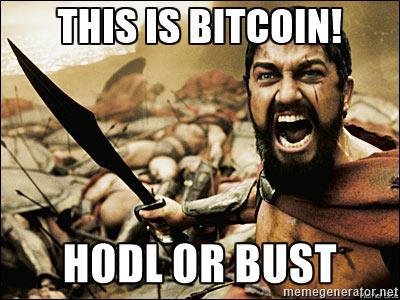
Thank you for your hardwork. This information is usefull. resteemed.
An excellent article for us all, even for the seasoned ones. Thank you! Namaste :)
Resteemed @ftlian thank you for this. My readers need it.
Thanks so much, @hilarski!
@ftlian thankx for sharing more important informations your information motivate me for my next step...i keep always touch in next for more informs
I read your post, and I want to say from you, in fact, little is said! Neither that terrible will not be after August 1, do not be so frightened)
everything will be fine! Test, and Bitcoin does not split into two parts!
Thanks for your great work!
This information is very important to us. Now I'm following you. Upvote and resteem :)
I wrote a similiar post some hours before yours, but was much shorter. This is very detailed analyzing more thoroughly all the parameters. Great job and much effort. Thanks for posting.
Great one, oh it was long! It's not that bad to refresh some info.
Thanks for your hard work!
Scary but useful information, and I understand it so much better now, so at least feel that I can make a more informed decision Will be losing a lot of sleep over next couple of weeks though... upvoted and following very closely!
Fantastic post. Certainly detailed and well written towards helping everyone understand a complicated rift and something that a lot of people don't really understand. All they see is BTC tanking without any background. And the ride begins!
With all this fear in the coming weeks and perhaps in 2 months, perfect time to stock up! 🙌🏼🙌🏼
Now THIS is some good information! Thank you for explaining everything clearly regarding Segwit2x, the UASF, and the multiple outcomes surrounding them. I think people need to be cautious, as you stated, and have a private key for their currency. I'm holding all cash right now, and will continue to do so until the dust settles. This is a great chance to pick up alt coins at a cheap prices, and I see any further downturn as more opportunity. It will be one crazy ride but we're all in this together! HODL!